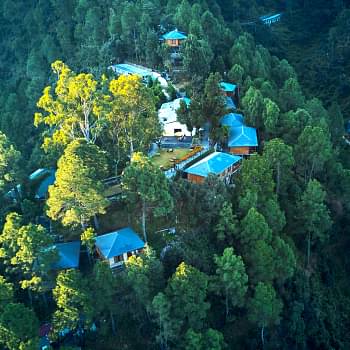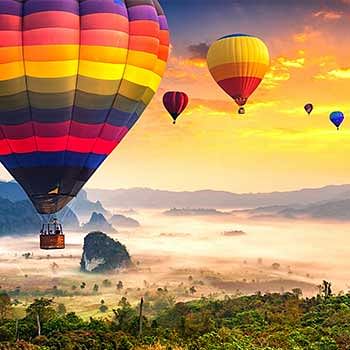February 24, 2021
5 Things You Didn't Know About Sikkim

Nitin Jain


View all
125+
Resorts

View all
2000+
Experiences
'Only At Club Mahindra' Experiences
February 24, 2021

Nitin Jain
Located amid the Himalayas, Sikkim is one of the most beautiful and cultured states in India. Sikkim is bordered by Nepal to the West, Bhutan to the East, Tibet to the North, and West Bengal to the South. The culture of Sikkim is vivid. The state has 11 official languages and a slew of rituals. The state has managed to preserve its simplicity and heritage to date.
Even when Sikkim is located in the north-eastern part of the country, it is not a part of the Seven Sister States. Sikkim was merged with India in the year 1975. Sikkim has a literacy rate of over 70 per cent and is the least populated state in India.
Over 60 per cent of Sikkim is mountainous. A sizeable number of 6000-metre high peaks lie on the eastern and western borders of the state. The third highest mountain in the world—Kanchenjunga that rises to 8598 metres, lies in Sikkim. Places to visit in Sikkim include virgin forests, amazing waterfalls, alpine meadows, rhododendron flowers, and Tibetan-style Buddhist Gompas.
Many things about Sikkim and the culture of Sikkim are unknown to the world. Below are 5 things that we think you didn’t know about Sikkim:
Sikkim adopted organic farming practices in the year 2003 to protect the environment and promote good health. Since then, the state has emerged as the foremost democratic model on organic farming in the world. The then Chief Minister of Sikkim had initiated Sikkim Organic Mission 2015 to convert the state into a completely organic state by 2015. The Organic Mission was connected with ecotourism to boost tourism in the state.
Today, Sikkim is the first state in the world that is 100% organic. The state’s policy phased out chemical fertilisers and pesticides and attained a total ban on the use and sale of chemical pesticides in the state. All of the state’s farmland is certified organic. The transition has benefitted over 66,000 farming families.
The state of Sikkim lies in the shadow of the mammoth Khangchendzonga or Kanchenjunga mountain. Because of the variations in climate, vegetation, elevation and habitat in Sikkim, many threatened and endemic species thrive here.
The region is snuggled in the Himalaya Biodiversity Hotspot. More than 220 water bodies can be found in Sikkim, fed mostly with meltwater from glaciers. With an array of floral and faunal species, Sikkim is among the world’s ten most critical centres for endemism and biodiversity.
Tsomgo Lake, located in East Sikkim, is a glacial lake. The lake is usually frozen in the winter season and is one of the most famous places to visit in Sikkim. People don’t know that apart from its natural beauty, the lake is also known for a mysterious story associated with it.
It is said that the region where the lake currently exists was a shed where yaks lived. Also, the area around the lake was a village in which tribal people lived. One fine night, the oldest woman in the tribe saw a dream that the village will soon drown in water and there will be no life left. The old woman warned the villagers of what she saw in her dream, but nobody listened to her. Eventually, when no one was convinced to leave the village, the women left the village along with her yak. Soon after, as per her dream, the village got submerged in water. The water washed away the existence of any human or animal that lived in that village.
Today the natives of the state visit the lake and pray to the spirits of the dead. The lake has become a part of the culture of Sikkim. Now you know why Tsomgo Lake is so famous. Visit Tsogmo Lake while on your visit to Sikkim. Stay at one of the best resorts in Sikkim while visiting the state—stay at Club Mahindra Gangtok, 40 km away from the lake.
The red panda is Sikkim’s state animal. Scientific data on the status of the red panda in Sikkim is minimal. While large regions are shown as areas with red panda distribution, only small pockets are actually housed by the species. According to a recent survey conducted by the World Wildlife Fund and the Sikkim forest department, there are only around 300 red pandas in the state of Sikkim.
Sikkim grabbed the top spot in Lonely Planet’s top 10 places to visit in 2014, beating Texas in the US, Australia’s Kimberly, and England’s Yorkshire. Sikkim’s responsible and eco-friendly travel is a factor that led the state to the top of the list.
Thus, Sikkim is a treasure trove of nature, biodiversity, tourist attractions, and vibrant culture. Explore the many places to visit in Sikkim to witness the unique and amazing culture of Sikkim. Stay at Club Mahindra Gangtok and Club Mahindra Baiguney in Gangtok, and Summit Sobralia in Namchi, the top resorts in Sikkim.
Mahindra Holidays & Resorts India Ltd. (MHRIL), a part of Leisure and Hospitality sector of the Mahindra Group, offers quality family holidays primarily through vacation ownership memberships and brings to the industry values such as reliability, trust and customer satisfaction. Started in 1996, the company's flagship brand ‘Club Mahindra’, today has over 250,000 members , who can holiday at 100+ resorts in India and abroad.